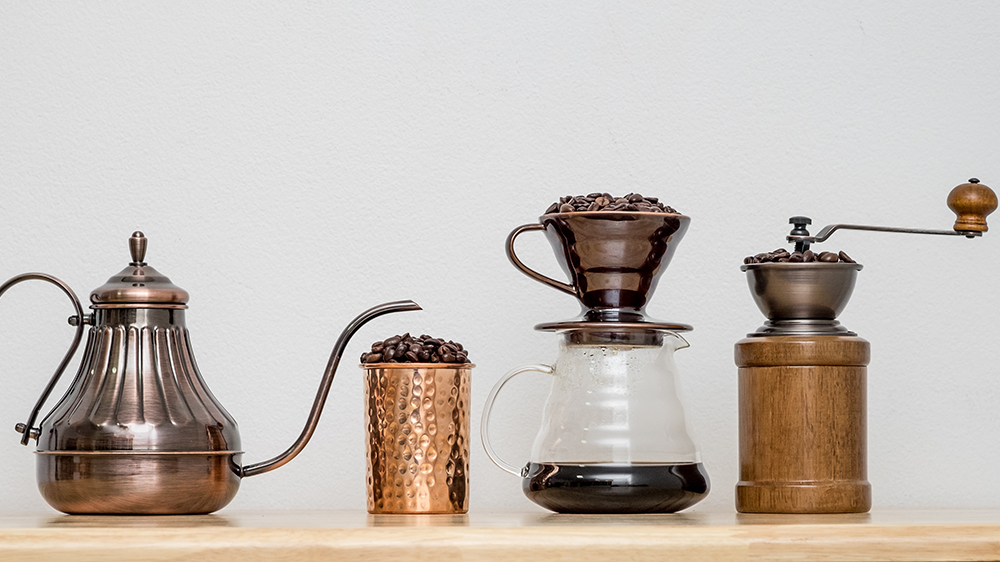Coffee is a beverage loved around the world, but its taste varies greatly depending on the region, variety, and environment in which it is grown.
Is it Arabica, with its delicate and complex flavor, or Robusta, with its strong bitterness and unique flavor?
Is it a shallow roast with a strong acidity or a deep roast with a strong bitterness?
But did you know that the factors that most affect the taste of coffee are the way the beans are ground, the extraction method, the quality of the water, and the temperature of the hot water used for extraction?
By understanding and controlling these factors, it is possible to brew a cup of coffee to your liking.
By pursuing the optimal brewing method, we would like to show you how to get the best flavor from even the most easily available coffee beans!
Equipment for brewing good coffee
Although it may not be considered very important, utensils are important to maximize the flavor of coffee!
We have summarized the differences and characteristics of each utensil, so please use this as a reference to find the flavor you prefer.
Grinder (Coffee Mill)

This equipment is used to grind coffee beans and can be divided into electric and manual types.
Generally, the electric type is called a “grinder” and the manual type is called a “coffee mill,” but both are the same.
- Grinder
It is characterized by its ability to grind evenly and produce a consistent flavor during extraction.
They are useful in cafes and restaurants because they can grind large quantities of coffee beans in a short time. - Coffee mill
There is the pleasure of exploring the desired grain size by adjusting the grinding speed and force.
Because they are convenient to carry, they are often used by people who enjoy coffee as a hobby or when traveling.
You can see why general coffee chain stores use grinders and specialty coffee shops run by baristas use coffee mills!
Dripper
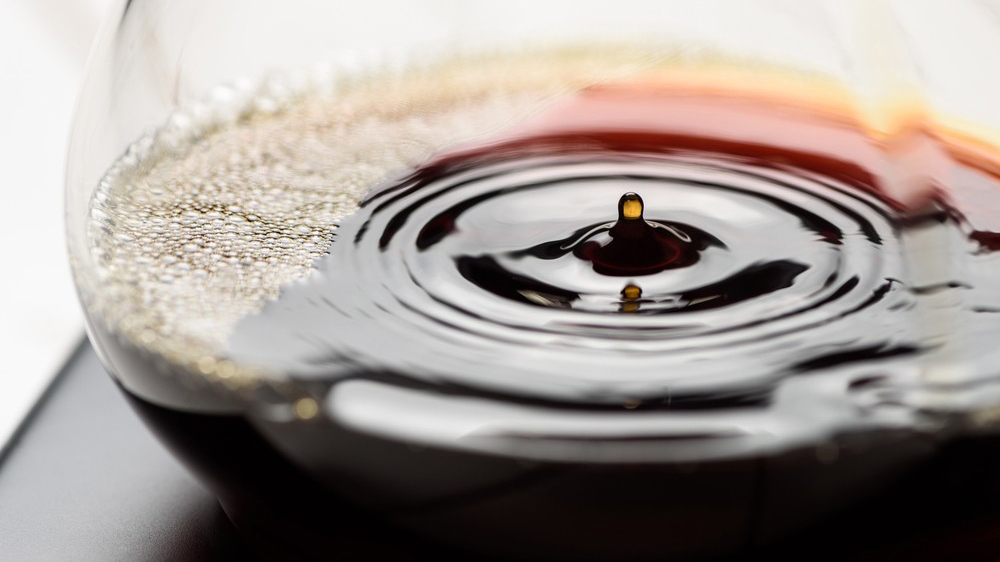
An utensil used to brew coffee, the material and shape of which greatly affect the extraction process.
Drippers can be made of ceramic, glass, metal, or plastic.
- Ceramic and glass
Excellent heat retention properties reduce temperature fluctuations during extraction, which tends to produce a stable flavor.
Recommended for those seeking a delicate flavor. - Metal
While temperature control is difficult, its durability makes it suitable for outdoor use.
Recommended for those who want to enjoy the atmosphere. - Plastic
Lightweight and easy to handle, suitable for beginners.
Cost is also low, so it is easy to try.
Drippers may be the most difficult to select because ceramic and glass drippers feature stylish design, metal drippers feature high extraction precision, and plastic drippers feature cost performance.
Filter
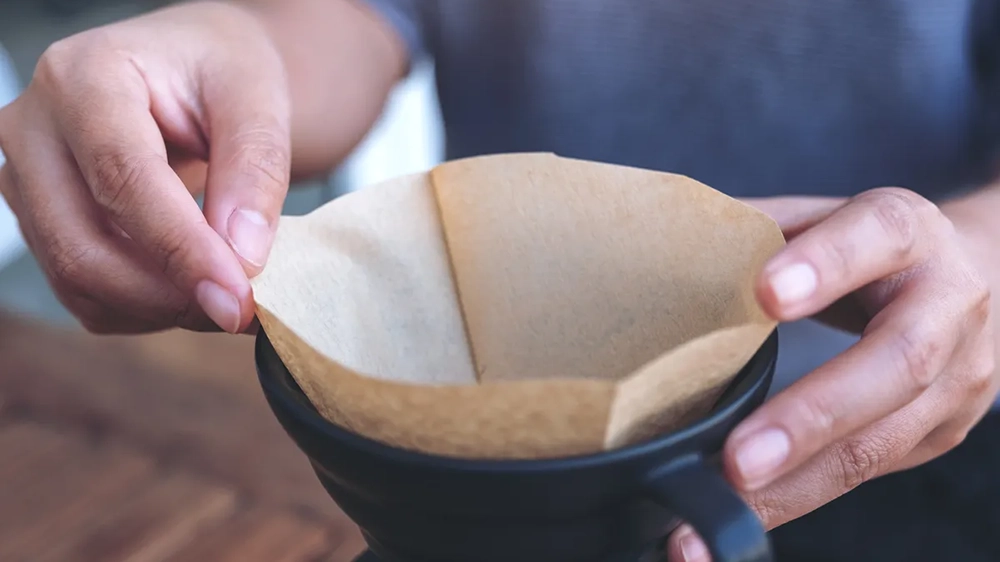
Three types of filters are commonly used to filter coffee powder: paper filters, flannel filters, and metal filters.
- Paper filter
This is the most popular choice and tends to produce a clean, clear taste.
It is disposable and hygienic, but the taste can vary slightly depending on the type of paper. - Flannel filter
The fine fibers of the filter allow the coffee to be brewed while retaining just the right amount of coffee oil, resulting in a mellow, deep flavor.
It is a little troublesome to maintain, but this makes it easier to obtain a unique flavor. - Metal filter
Leaves a large amount of oil, resulting in a full, strong flavor.
The filter itself is reusable, making it an environmentally friendly option.
Paper filters are most commonly used, but if you are particular, it is interesting to try other filters as an option!
Kettle
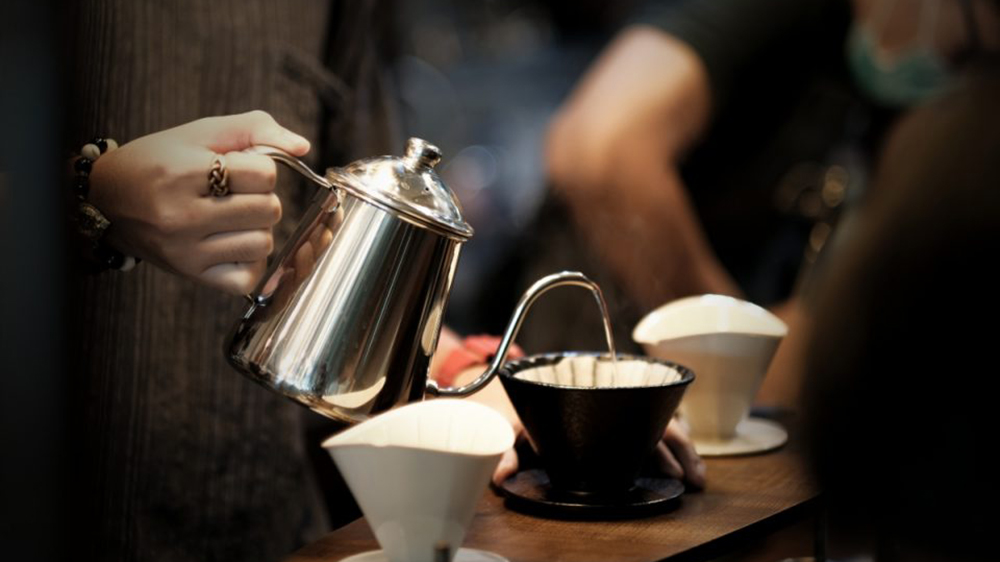
The kettle used to pour hot water actually plays an important role as well!
A drip kettle with a narrow spout, in particular, allows you to finely adjust the amount of hot water and pouring speed for ideal extraction.
In addition, by using a kettle with a temperature control function, you can precisely control the water temperature, which affects the taste of the coffee.
If you are particular about your coffee, a dedicated kettle is a good option to take your taste buds to the next level!
Techniques for brewing good coffee
Outside of the equipment, brewing techniques can greatly change the flavor and aroma of coffee!
Below are some typical coffee brewing techniques.
Hand drip
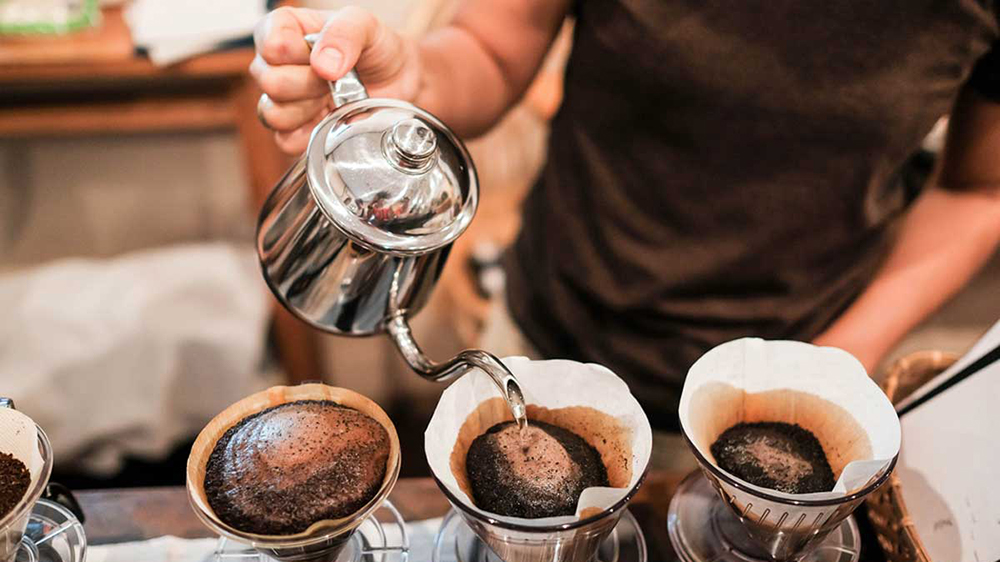
Hand drip is the most common and classic method.
Coffee is extracted by placing coffee powder on a paper filter set in a dripper and slowly pouring hot water over it.
Because you can control the pouring method with your hands, you can finely adjust the extraction process to create the flavor you prefer.
The greatest feature of this machine is that it produces a clean and clear taste!
- Step 1
Set the paper filter in the dripper and moisten the entire filter with hot water.
This is to prevent the taste of the paper filter from transferring to the coffee and to warm up the dripper. - Step 2
Put the coffee powder into the filter and evenly distribute it.
A medium-fine grind is suitable. - Step 3
Pour a small amount of hot water (90-96 degrees) and let it steep for 30 seconds.
This expands the beans, releases gas, and brings out the flavor. - Step 4
Pour hot water in a slow circular motion from the center outward.
Approximate extraction time is 3 minutes.
French press
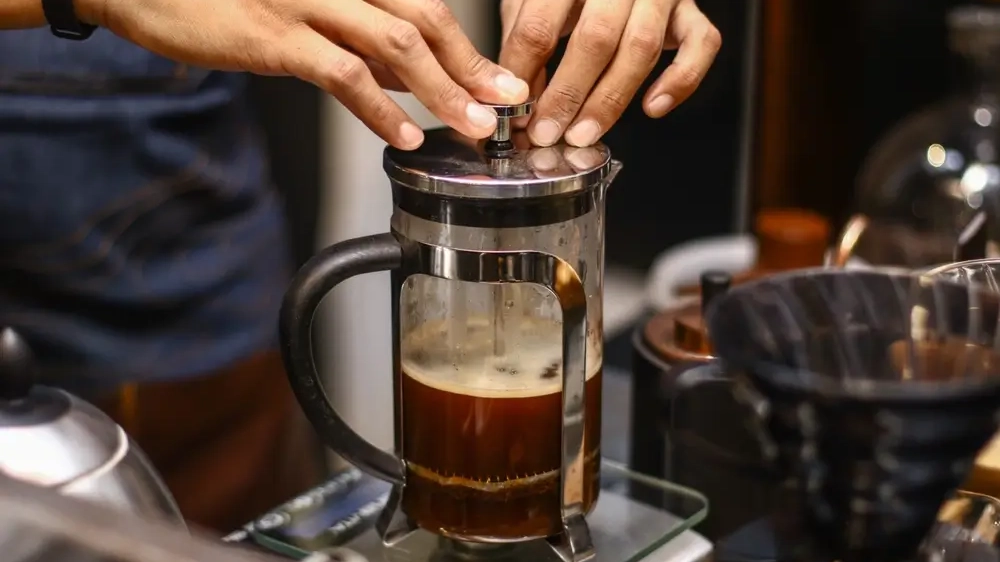
French press is a method of extraction in which coffee powder and hot water are steeped together.
Coffee is extracted by straining directly through a plunger (press with filter) without passing through a filter.
Because the coffee powder and hot water are in contact with each other for a long time, the coffee ingredients are easily extracted evenly!
Coffee oil and fines remain in the cup during the extraction process, so you can enjoy a richer, fuller flavor.
- Step 1
Coarsely grind coffee beans.
Be careful not to grind too finely or the plunger will clog easily. - Step 2
Add the ground coffee powder and pour in hot water.
The temperature of hot water should be around 93 degrees Celsius. - Step 3
Stir the water gently so that the powder rises to the surface, and put the lid on.
Do not press down the plunger yet. - Step 4
Allow the extraction time to be a little longer, about 4 minutes.
Finally, press down the plunger slowly to brew the coffee.
Espresso
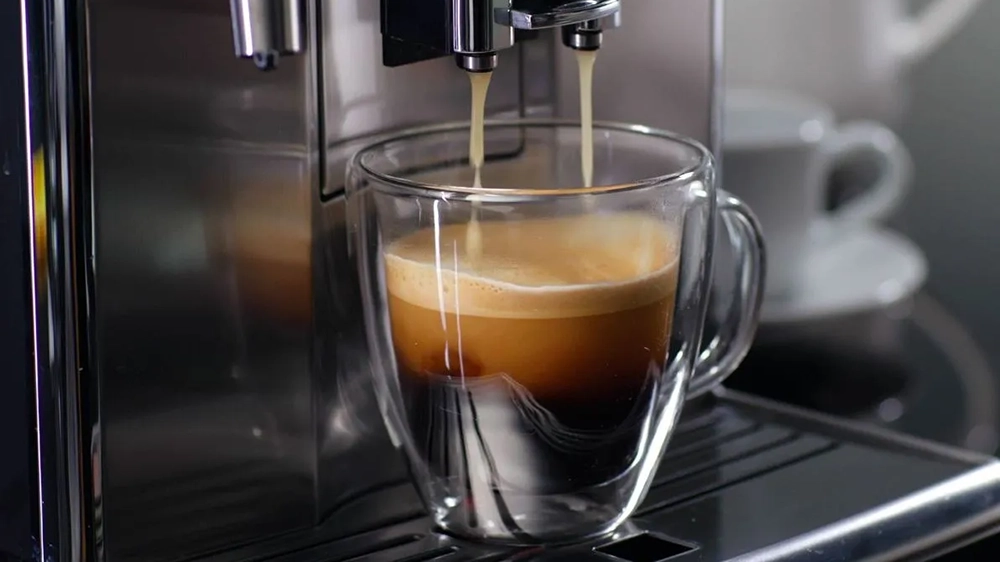
Espresso is a method of extracting coffee by applying high pressure over a short period of time.
A special espresso machine is used to make concentrated coffee.
Although it is sometimes drunk on its own, it is more commonly used as a base for cappuccinos, lattes, etc., and offers a rich, strong aroma and flavor.
The choice of beans, the grind, and the machine settings have a great influence on the flavor, so detailed adjustments are necessary.
- Step 1
Grind coffee beans finely and fill a portafilter.
Press down evenly with a tamper. - Step 2
Set the machine to extract coffee through hot water at a pressure of approximately 9 bar.
The standard extraction time is 25 to 30 seconds.
The siphon
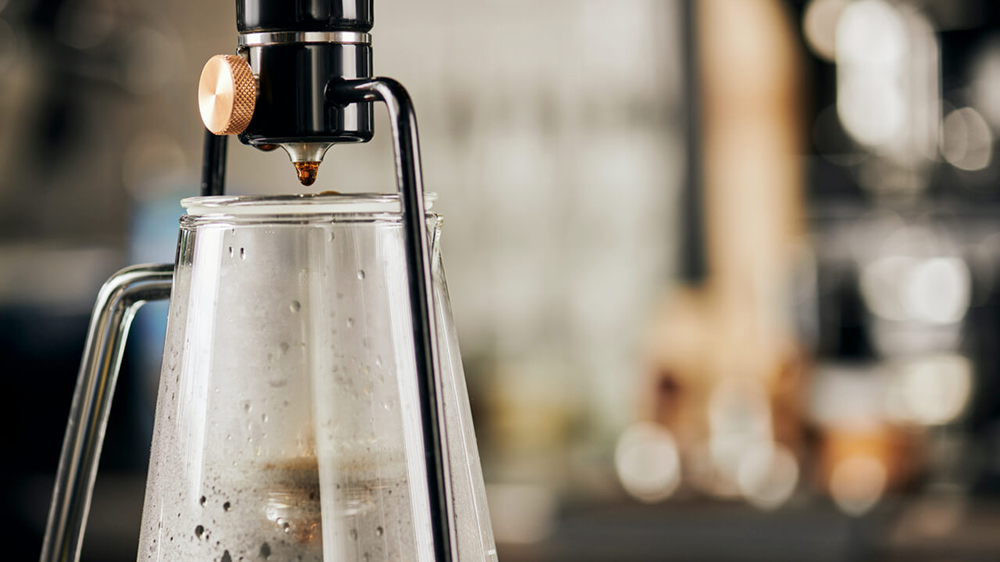
The siphon is a unique method of extracting coffee using a vacuum.
Using a glass utensil, the coffee is extracted through a process that uses the vaporization of hot water to move it to the top, where it is mixed with coffee powder, and then returned to the bottom again.
It is an interesting brewing method that allows you to enjoy the beauty of the appearance and the scientific process.
The extracted coffee will have a clear and delicate flavor.
- Step 1
Fill the lower container of the siphon with water and set the coffee powder in the upper container.
A medium grind of beans is suitable. - Step 2
Heat the lower container and bring the water to a boil.
The hot water moves to the top and mixes with the coffee powder. - Step 3
After stirring for a few minutes, turn off the heat and create a vacuum.
The extracted coffee returns to the lower container.
Cold brew coffee
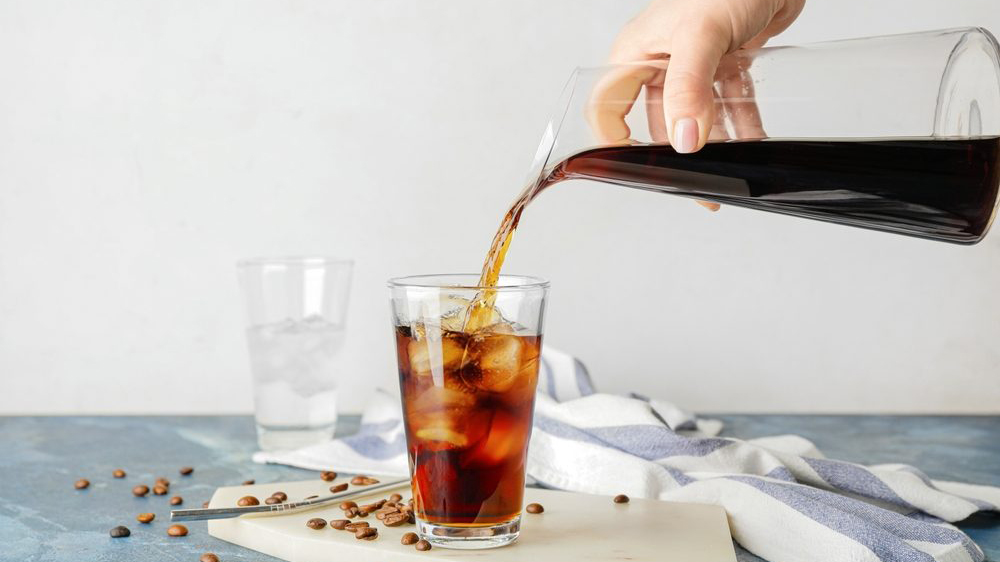
Cold brew coffee is a method of brewing coffee at low temperatures over a slow period of time.
Because cold water is used, it produces a smooth, mellow flavor that differs from that of regular hot coffee.
The long brewing process reduces bitterness and acidity, giving it a mellow taste.
It is popular as the perfect iced coffee for summer!
- Step 1
Coarsely grind coffee beans. - Step 2
Put coffee powder and water in a container and brew slowly in the refrigerator for 8 to 12 hours. - Step 3
After extraction, strain the coffee through a filter and pour the coffee into a cup.
Ideal equipment and techniques for brewing good coffee
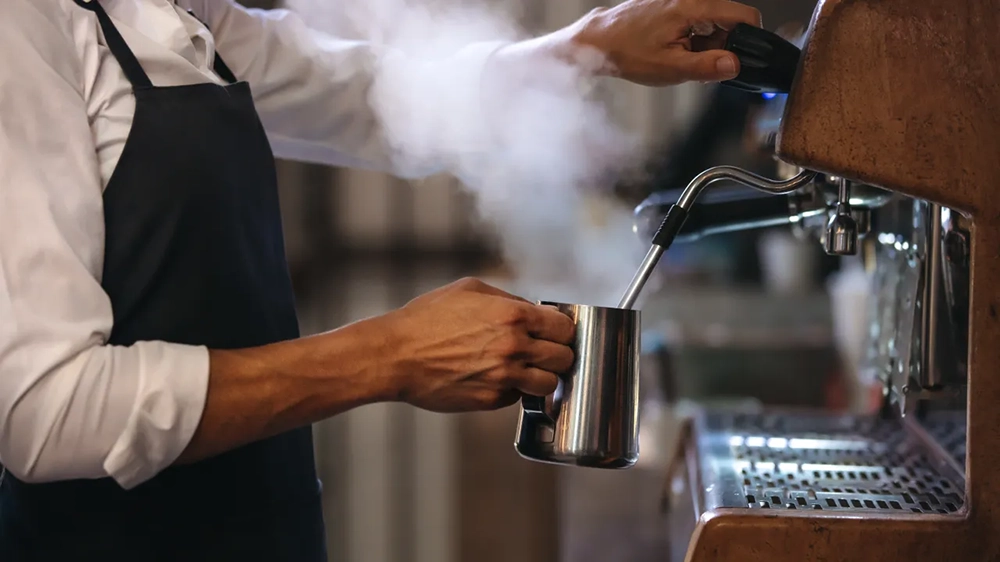
While it is important to pay attention to the origin and variety of coffee, it is also important to be aware of how coffee is brewed.
The more you know about coffee, the more you will understand why top baristas brew coffee with a focus on extracting every single drop.
Since we are not baristas, we finally came to the conclusion that the coffee we serve in our store is high quality coffee by using a good coffee machine.
We have been very particular about the grade and freshness of the beans for our coffee, and now we would like to do more research on how to brew good coffee.
Coffee is a deep drink, so it is difficult to pursue the ideal method, but we hope you will find the brewing method that suits you best and enjoy your daily coffee time.

